At the beginning of all of my digital marketing training sessions, I ask participants to share why they enrolled in the first place. The majority of students come from marketing positions and choose to attend as a way to advance their careers on a more digital trajectory. However, there are some students that come from digital production backgrounds and are taking the session as a way to move into more strategic marketing roles without ‘digital’ necessarily in the title. As one such student recently explained: “I’m taking this class to try and escape the digital ghetto”.
Now as someone who has spent many years working with/in “digital ghettos” (and looks forward to many more), I find this characterization extreme, but understand the point. Breaking into more strategic and integrated marketing roles can be a challenge for someone with solely a digital production background. Training can help, but there are a number of other important steps to take. Over my career I have seen a number of colleagues successfully transition from tactical digital roles to increasingly senior integrated marketing positions. Here are a few things that these folks had in common that helped them in their “escape”.
Become a bridge for integrated marketing
I once worked with a Digital Project Manager in an integrated agency that was passionate and knowledgeable about process and delivery. She worked closely with other disciplines on integrated assignments and really shone through her collaborative approach that focused on the big picture, while artfully introducing new ways of working from her software development background (e.g. sprints, stand-ups, bug tracking, and other tricks of the trade from the “digital ghetto”). She quickly earned the trust and respect of all of her colleagues, and is now the Head of Integrated Production.
A key challenge that continues to fester for many marketing organizations today is the ongoing schism between marketing teams and digital departments. Many marketers view digital teams as “technology doers”, while many digital team members view marketers as neophytes that “don’t get digital”. This messy cultural divide can actually provide you with a great opportunity to plan your escape. As someone that knows digital production, you can be the bridge between departments and establish new ways of working and valuable relationships along the way. Doing so will also allow you to demonstrate how your digital production experience, skills, and ways of working can transfer and benefit an integrated marketing context. You can also help your marketing colleagues “get it” and learn something valuable, too.
Create your path and fill the gaps
When I was running a Digital Strategy Department I hired a new Digital Analyst straight out of school. While he was quickly learning the digital ropes, he made it clear that he would like to ultimately be involved in broader brand planning work. Together we worked out a plan that, among other things, included him going back to school to take a non-digital marketing course on his own time over an 18-month period. He completed the course, continued to develop his strategic chops, and is now a Planner at a leading integrated agency with a very bright future ahead.
Like any other goal, successful career planning starts with the end in mind. Once this is clear, you need to honestly and objectively identify what you need to advance. There will be gaps. What experience do you lack? What training do you need? What relationships will help along the way? Book meetings with people who have the job you want and get their advice. Speak openly and constructively with your manager to understand how they will support you in transitioning from a digital production position to a new more strategic integrated marketing role, as this may be a new path. Look elsewhere if they won’t.
Always start with the business context
One of my all-time favourite creative collaborators started as a copywriter for digital advertising, but you would never know it from your briefings with him. He was laser-sharp in his strategic questions and challenged any ambiguous or weak points in any briefing material. Clearly, if he was going to invest his time in developing a solution, he needed to first clearly understand the challenge (he kept Planners up at night). Senior managers across the agency took notice, and he quickly moved up the ranks to become an SVP/Creative Director at a large integrated agency.
If you want to be viewed as someone who is capable of contributing to marketing strategy, always begin your conversations, briefings, and planning meetings for digital assignments by focusing first on what the business is ultimately trying to accomplish. Don’t rush to scope, timing, budget, or panic about executional details—this will place you firmly in the ‘doer’ box. Take the time to demonstrate your appreciation and understanding for the business context for the project, and work down to the solution from there. Your senior marketing colleagues will also take notice.
Friend, I wish you the best of luck with your escape. Remember that you are always welcome back here with me, in the “digital ghetto”.

